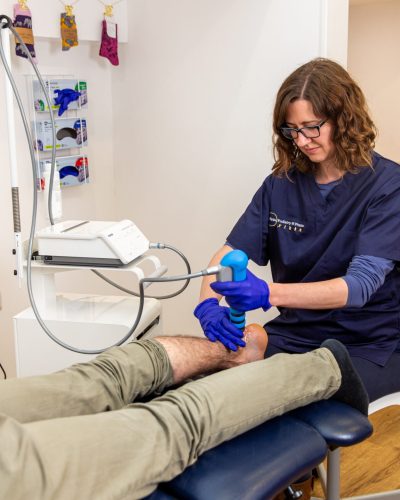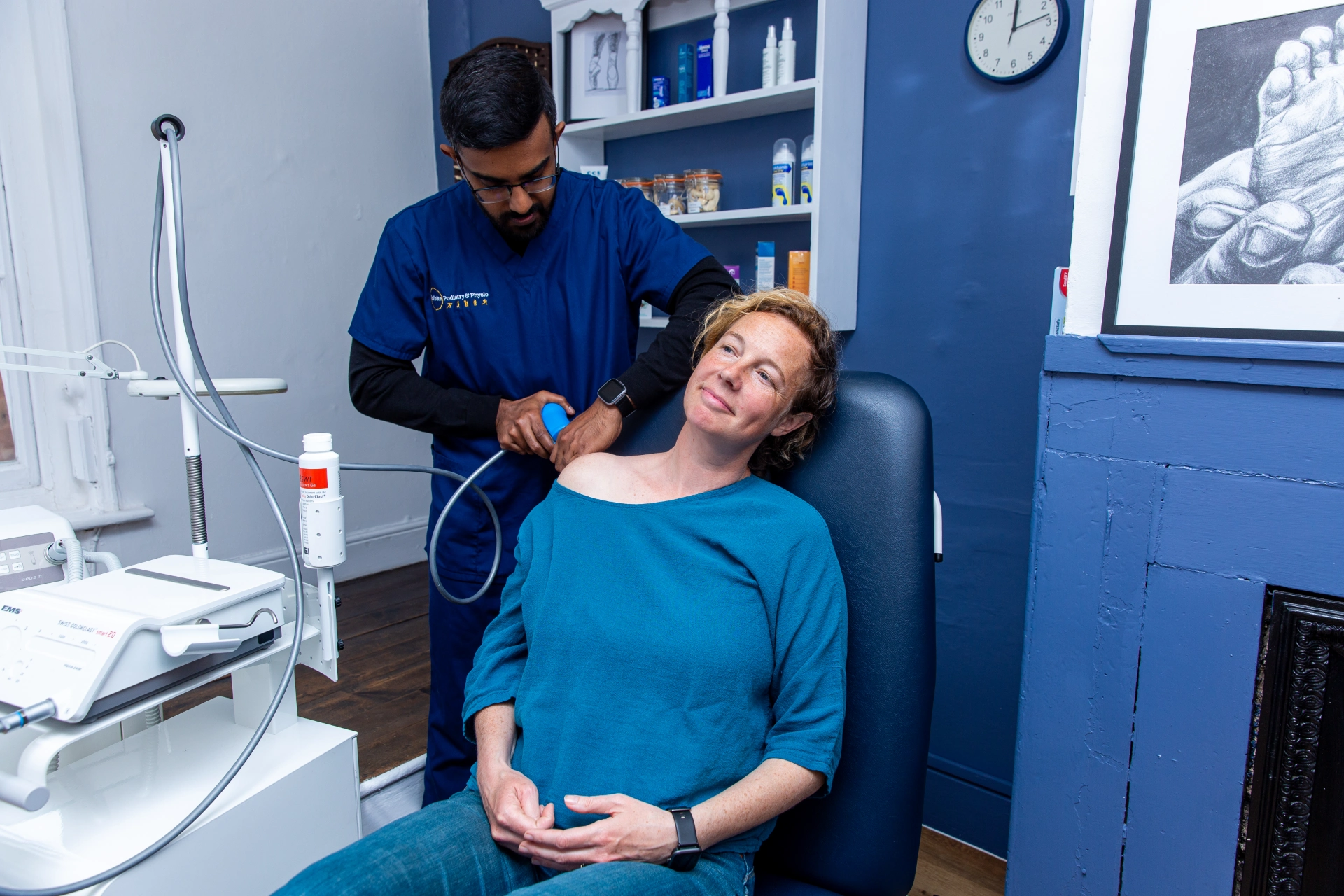
What is Extracorporeal Radial Shockwave therapy?
What conditions can Shockwave help?
- Achilles tendinopathy
- Plantar fasciitis (heel/arch pain)
- Patellar tendinopathy (knee pain)
- Knee osteoarthritis
- Tennis/Golfer’s elbow
- Carpel Tunnel Syndrome
- Frozen shoulder
- Trochanteric bursitis/gluteal tendinopathy (hip pain)
- Hamstring tendinopathy (buttock pain)
- Calcium deposits in tendons (calcific tendinopathy)
More about Extracorporeal Shockwave!
A probe is passed over the site of your pain and shockwaves are directed to the area. These shockwaves provide improved blood circulation to encourage tissue repair and may also help to break down calcium deposits that may be contributing to your pain.
Treatment with Shockwave produces an inflammatory response around the site of pain. The body responds to this by increasing metabolic activity. This stimulates and accelerates the healing process. Shockwave blocks transmission of pain signals by eliminating substance P, which often results in immediate pain relief.
- Fast and effective pain relief
- Quicker recovery from injury
- Quicker return to activities
- Restoration of mobility
- Non-surgical and non-invasive
- No need for medication
- No risk of infection.
It takes around 5 minutes for treatment to be completed.
The accepted protocol for Shockwave therapy is three treatments at weekly intervals; however, additional treatments may be needed. Your practitioner will discuss this with you at your initial appointment and again at follow up.
You may feel some discomfort as the shockwaves pass into deeper tissues. Most people tolerate this well, but of course everybody’s pain threshold is different. If necessary, the settings of Shockwave can be adjusted to make treatment tolerable.
Most people will experience immediate pain relief from their symptoms, but there may be some discomfort experienced for 2-4 hours after.
There may be some mild bruising or swelling in the area treated, potentially some tenderness and minor tingling. This should pass within a few days. There is no need to alter your day-to-day activities.
The aim of shockwave is to trigger an inflammatory response to encourage healing. For this reason, we advise you not to use anti-inflammatory medications in the day or two following Shockwave treatment. Likewise, do not use ice. The pain should subside within 24 hours. Use Paracetamol if needed, ensuring first that you able to take this medication safely.
Great! This is what we expect. But even if it feels good, we advise you to take it easy. Do not exert yourself beyond your normal level and avoid any physical activity for at least 24 hours post treatment.
Although some effects of Shockwave, including pain relief, can be felt immediately. The full benefits of this therapy can take up to 4 months to be felt. We will support you through this phase and encourage you to stay in touch, letting us know if you still have problems. Additional treatments or an alternative treatment are necessary in some cases, and this will be clearly discussed with you throughout the process.


